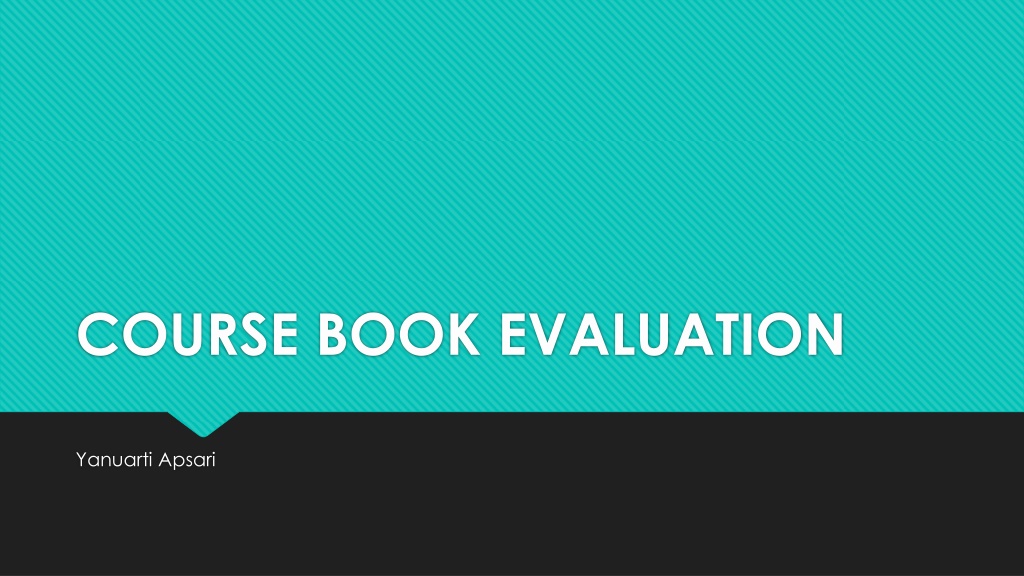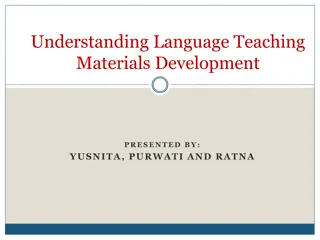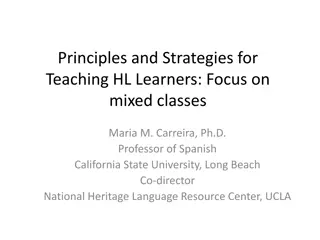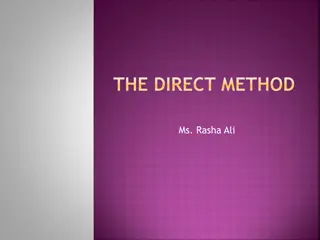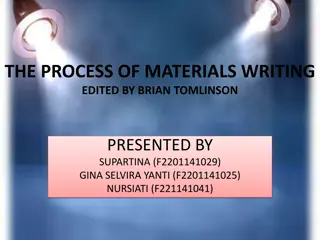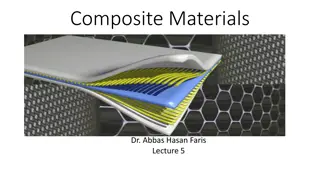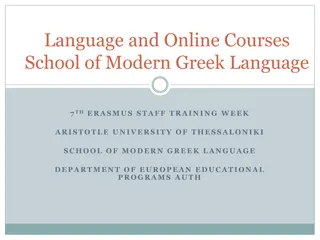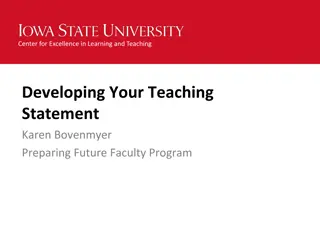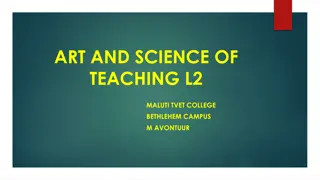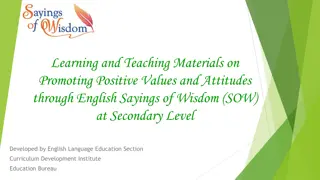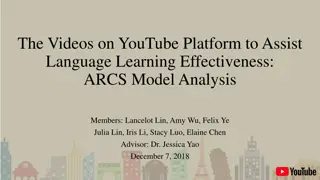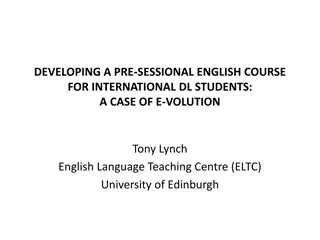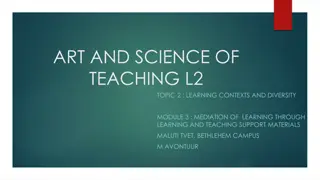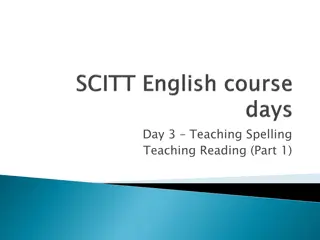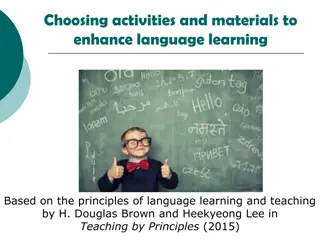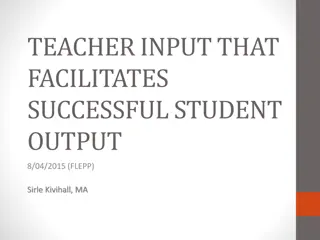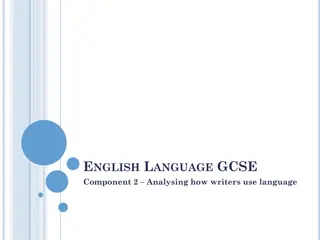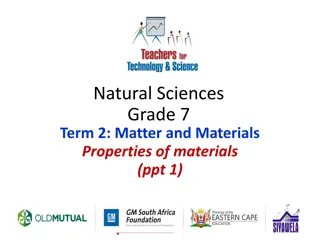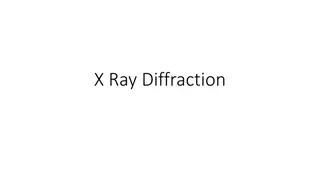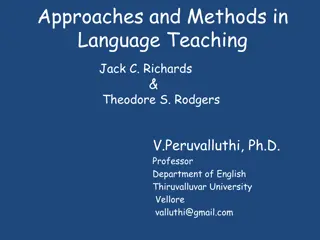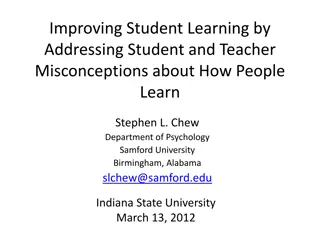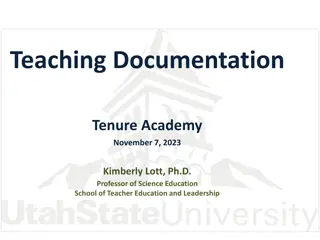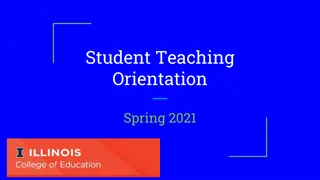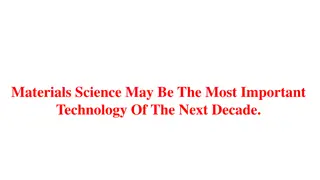Understanding Types of Language Teaching Materials
Explore the various types of language teaching materials, including authentic and non-authentic materials, pedagogical resources, and created materials. Learn about the characteristics of authentic material and its advantages in language learning. Discover examples of authentic materials such as songs, magazines, newspapers, and more.
Download Presentation

Please find below an Image/Link to download the presentation.
The content on the website is provided AS IS for your information and personal use only. It may not be sold, licensed, or shared on other websites without obtaining consent from the author. Download presentation by click this link. If you encounter any issues during the download, it is possible that the publisher has removed the file from their server.
E N D
Presentation Transcript
COURSE BOOK EVALUATION Yanuarti Apsari
CHAPTER 2 TYPES OF LANGUAGE TEACHING MATERIALS
ASSESSMENT CLARITY RELEVANCE MASTERY
TYPES OF TEACHING MATERIALS AUTHENTIC Material Non Authentic Material Pedagogical Material Created Material
TYPES OF TEACHING MATERIALS AUTHENTIC Material Non Authentic Material = Pedagogical Material = Created Material
AUTHENTIC MATERIAL? Authentic material is authentic tetxts as real life texts, not written for pedagogic process. Authentic material refers to those taken from real life sources and they are not designed for teaching and learning purposes.
NON AUTHENTIC MATERIALS? Non authentic material refers to textbooks and other texts specially designed for learning purposes
The Example of Authentic Material 1. Song 2. magazine 3. journal 4. Newspaper 5.literature 6. material from internet
The Example of Authentic Material AUDIO/ VISUAL 1. TV commercial 2. Films 3. News items 4. Weather forecasts 5. Announcement 6. Radio talks, 7. Interview 8. Debates 9. Songs 10.Video 11.Short animation WRITTEN 1. Recipes 2. Article/ journal 3. Schedules 4. Notes 5. Letters 6. Cards 7. Advertisements 8. Brochures 9. Poem 10.Application forms 11.Lyrics 12.Magazines, newspaper 13.internet
The advantages of Authentic Material Authentic materials are often more interesting because they reflect real life phenomena./ they have a positive effect on learners motivstion They provide exposure to real language They relate more closely to students need They support more creative approach to teaching
The Disadvantages of Authentic Material Authentic materials often contain difficult language and unneeded vocabulary items.
THE ADVANTAGES OF NON AUTHENTIC MATERIAL?
THE ADVANTAGES OF NON AUTHENTIC MATERIAL? The language used of non authentic material has been modified and adjusts according to learning objectives and students ability.
Nuttall (1996) proposes three criteria that need to be taken into account when choosing reading material is suitability. It refers to whether or not the text interests the students to read and whether or not it is appropriate for their goals in learning English. Exploitability deals with the condition whether or not the text can be exploited for teaching purposes. Readability concerns with whether the text is too easy or too hard for the students. Thus, it is obvious that selecting relevant and interesting material for readers is a key to their engagement in the process of learning.
The DIFFERENCE BETWEEN Authentic materials and Non Authentic materials
The DIFFERENCE BETWEEN Authentic materials and Non Authentic materials Authentic Material Authentic materials have more natural language and reflect real life. Authentic material contains difficult words Non Authentic material The language of non authentic materials has usually been modified and adjust according to the learning objectives and level of students ability
WHICH ONE IS BETTER? AUTHENTIC or NON AUTHENTIC? EXPLAIN WHY? Teachers are suggested to combine both authentic and non authentic material because both have their advantages and disadvantages
Republic Indonesia law No. 14, 2005 and Government Regulation No. 19, 2005: Professional teacher mush have 4 competences. The competences conclude pedagogical competence, personality competence, personal competences and social competence. 1Pedagogical competence covers the understanding of learners in terms of their characteristics and potentials, lesson planning and learning assessments. personal competence deal with showing a firm, mature and wise personality, having commitment to develop professionalism continuously and becoming a good model for students. Professional competence include knowledgeable in terms of subject matter, teaching and learning methodology and curriculum. Social competence refers to the ability to communicate effectively with learners, colleagues, parents and other members of the community
